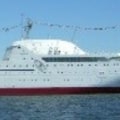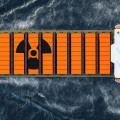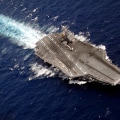Typically, ships embark for 10 days to 2 weeks each month for training operations in preparation for deployment. Extended operations outside the home port can last 6 to 9 months and ships are typically deployed once every 18 to 24 months. In a given cycle, a ship can be deployed, under maintenance, or not deployed, but can provide additional advanced presence as requested by theater commanders. The preparedness of an aircraft carrier against surges depends on the level of training of the aircraft carrier and the crew.
When implementation training is completed, the carrier can receive an increase in 30 days. Aircraft carriers that receive basic training immediately after a maintenance period have a lower level of readiness and can normally increase in 90 days. Cycle length has changed several times over the past two decades. Currently, the Navy uses a 32-month cycle.
Given a deployment per cycle, this has reduced the time a carrier is actually deployed, but has increased the amount of time it can increase. The Navy asked RAND to evaluate how different cycles would affect the amount of time a ship can deploy or deploy. Ford-class aircraft carriers are the world's largest warships, each designed for a lifespan of approximately 50 years with a single mid-life refueling. USS Nimitz (CVN 6), USS Dwight D.
Eisenhower (CVN 6), USS Carl Vinson (CVN 70), USS Theodore Roosevelt (CVN 7) and USS Abraham Lincoln (CVN 7) have completed their reviews of the refueling complex (RCOH) in Newport News, Virginia, with the USS George Washington (CVN 7) and the USS John C. Stennis (CVN 7) currently in the replenishment complex review. Ford-class aircraft carriers and carrier strike groups will provide basic capabilities for advanced presence, deterrence, maritime control, energy projection, maritime security and humanitarian assistance. The class offers better warability, quality of life improvements for our sailors, and lower total cost of ownership. Ford (CVN) 7 is the first aircraft carrier designed with all electric services, eliminating ship's steam service lines, reducing maintenance requirements and improving corrosion control.
New A1B Reactor, Aircraft Electromagnetic Launch System (EMALS), Advanced Arrest Equipment (AAG) and Dual-Band Radar (DBR) Deliver Improved Capacity with Fewer Personnel. The Ford class is designed to maximize the attack power of the air wing of the on-board aircraft carrier. The ship's systems and configuration are optimized to maximize the output generation rate (SGR) of onboard attack aircraft, resulting in a 33 percent increase in SGR over the Nimitz class. The ship's configuration and power generation plant are designed to accommodate new systems, including directed energy weapons, during its 50-year lifespan. The Ford class builds on the Navy's legacy of aircraft carrier innovation, dating back to the first aircraft carrier, the USS Langley (CV) and continues to this day.
The introduction of jet aircraft, angled decks and nuclear power were innovations that kept the aircraft carrier fleet as relevant to Cold War needs as it is during the current era of major power competition. The Ford class continues the history of innovation and adaptability of aircraft carriers that will allow it to serve our country for decades to come. The USS Ronald Reagan (CVN) 7 of the United States Seventh Fleet is currently the Navy's forward-deployed aircraft carrier in the Seventh. While other operators have a port of origin in the U. S.
UU. And deployed periodically, the USS Ronald Reagan is deployed permanently in Yokosuka, Japan, and spends about half of each year at sea. The USS Ronald Reagan, when combined with guided missile destroyers and cruisers, creates an aircraft carrier strike group of up to 12 ships and 75 aircraft. These forces have a higher operational pace than other Navy ships, and their forward deployment reduces an average of 17 days of transit time to the region compared to U. S.-based forces.
The Navy can assign another aircraft carrier to the Seventh Fleet for temporary operations, adding 70 more aircraft and numerous ships to our long-range attack capability. The Seventh Fleet controls 10 to 14 destroyers and cruisers at any given time, with 11 in Yokosuka and 25 regularly assigned to the region from Hawaii or San Diego. These surface ships carry Theater ballistic missile interceptors, long-range Tomahawk ground attack missiles and anti-aircraft missiles. If tensions escalated and turned into armed conflict, our advanced submarines would provide our greatest advantage against an enemy. At any given time there are 8 to 12 submarines in the Seventh Fleet.
The Seventh Fleet has four amphibious ships, the largest of which is the amphibious assault ship USS America (LHA). Nearly the size of an aircraft carrier, the United States is capable of carrying dozens of helicopters, Ospreys MV22 and F-35B Joint Strike Fighter aircraft, along with more than 1,700 Marines and their equipment. Amphibious ships are specifically designed to operate relatively close to shore, using landing boats to support amphibious operations on land. This design also makes them suitable for supporting humanitarian assistance and disaster relief efforts. In addition to amphibious ships, the Seventh Fleet also controls four mine countermeasure ships, designed to locate and neutralize mines.
Both these ships and amphibians are based in Sasebo, Japan. Forward deployed SEAL teams and special vessel units are based in Guam. They often support presidential visits. The Seventh Fleet is self-sufficient, with about 50 combat logistics ships commanded from Singapore. They are ships owned or contracted by the government, with partial civilian crews and presence of the Navy. These ships supply units of the Seventh Fleet throughout the region for continuous and sustained operations.
As a result of their objective value and vulnerability, aircraft carriers are always escorted by at least one submarine for protection. Even conventionally powered aircraft carriers such as UK's HMS Queen Elizabeth can travel up to 12000 miles (18000 kilometers) without refueling reducing need for frequent breaks. The Navy has recently adjusted staff tempo policies to better provide carriers where and when they are needed. Nimitz-class aircraft carriers were ordered to supplement Kitty Hawk and Enterprise class...



